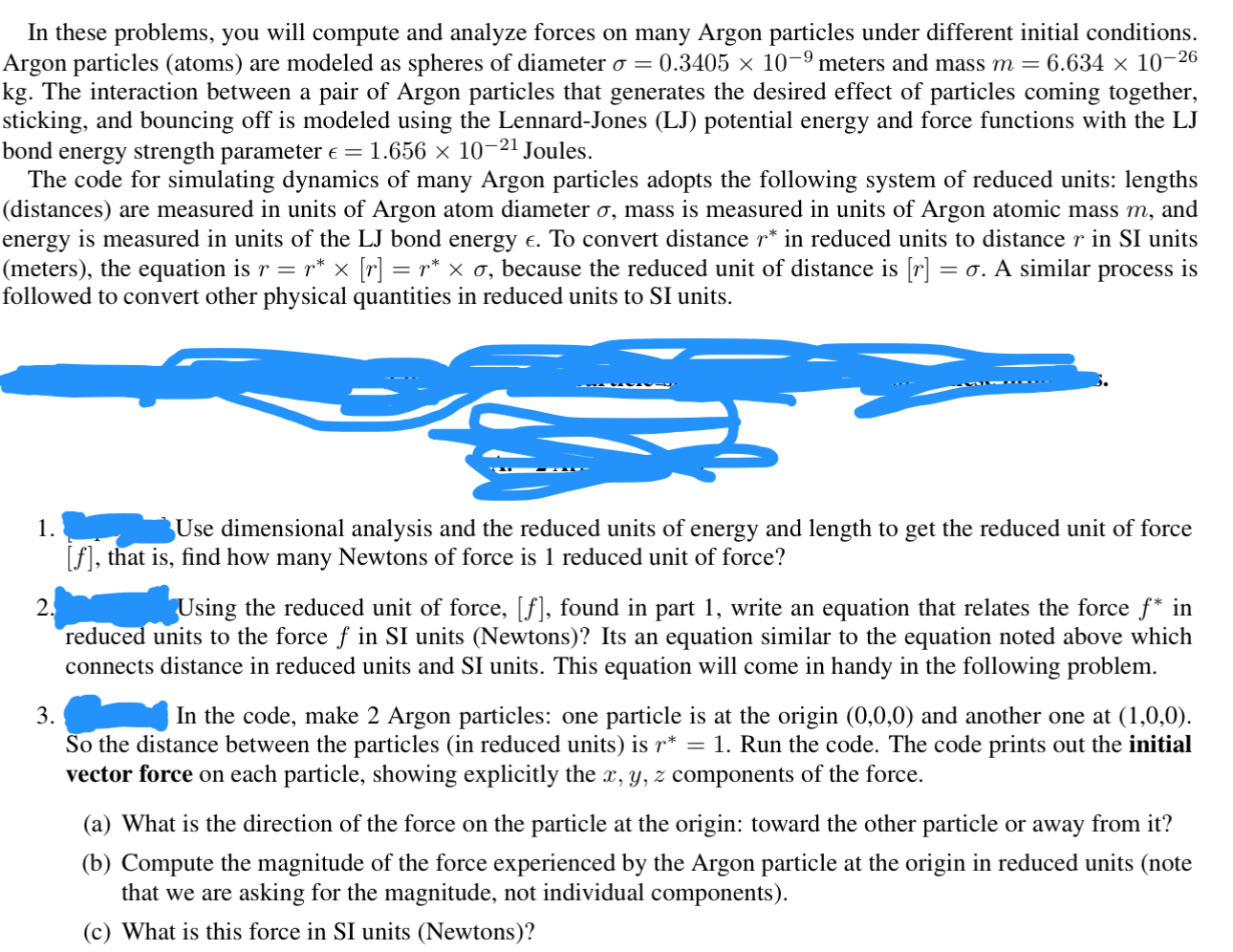Answered step by step
Verified Expert Solution
Question
1 Approved Answer
In these problems, you will compute and analyze forces on many Argon particles under different initial conditions. Argon particles ( atoms ) are modeled as
In these problems, you will compute and analyze forces on many Argon particles under different initial conditions. Argon particles atoms are modeled as spheres of diameter meters and mass kg The interaction between a pair of Argon particles that generates the desired effect of particles coming together, sticking, and bouncing off is modeled using the LennardJones LJ potential energy and force functions with the bond energy strength parameter Joules.
The code for simulating dynamics of many Argon particles adopts the following system of reduced units: lengths distances are measured in units of Argon atom diameter mass is measured in units of Argon atomic mass and energy is measured in units of the LJ bond energy To convert distance in reduced units to distance in SI units meters the equation is because the reduced unit of distance is A similar process is followed to convert other physical quantities in reduced units to SI units.
Use dimensional analysis and the reduced units of energy and length to get the reduced unit of force that is find how many Newtons of force is reduced unit of force?
Using the reduced unit of force, found in part write an equation that relates the force in reduced units to the force in SI units Newtons Its an equation similar to the equation noted above which connects distance in reduced units and SI units. This equation will come in handy in the following problem.
In the code, make Argon particles: one particle is at the origin and another one at So the distance between the particles in reduced units is Run the code. The code prints out the initial vector force on each particle, showing explicitly the components of the force.
a What is the direction of the force on the particle at the origin: toward the other particle or away from it
b Compute the magnitude of the force experienced by the Argon particle at the origin in reduced units note that we are asking for the magnitude, not individual components
c What is this force in SI units Newtons

Step by Step Solution
There are 3 Steps involved in it
Step: 1

Get Instant Access to Expert-Tailored Solutions
See step-by-step solutions with expert insights and AI powered tools for academic success
Step: 2

Step: 3

Ace Your Homework with AI
Get the answers you need in no time with our AI-driven, step-by-step assistance
Get Started


